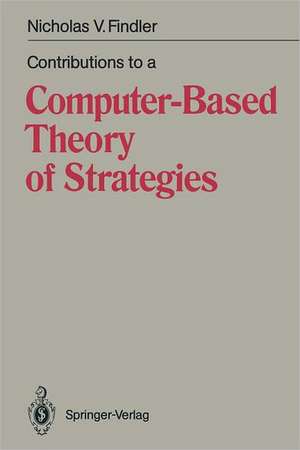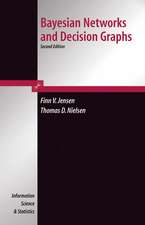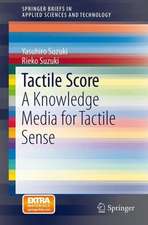Contributions to a Computer-Based Theory of Strategies
Autor Nicholas V. Findleren Limba Engleză Paperback – 13 dec 2011
Preț: 332.71 lei
Preț vechi: 415.89 lei
-20% Nou
Puncte Express: 499
Preț estimativ în valută:
63.66€ • 66.64$ • 52.99£
63.66€ • 66.64$ • 52.99£
Carte tipărită la comandă
Livrare economică 31 martie-14 aprilie
Preluare comenzi: 021 569.72.76
Specificații
ISBN-13: 9783642757389
ISBN-10: 3642757383
Pagini: 304
Ilustrații: XVII, 282 p.
Dimensiuni: 155 x 235 x 16 mm
Greutate: 0.43 kg
Ediția:Softcover reprint of the original 1st ed. 1990
Editura: Springer Berlin, Heidelberg
Colecția Springer
Locul publicării:Berlin, Heidelberg, Germany
ISBN-10: 3642757383
Pagini: 304
Ilustrații: XVII, 282 p.
Dimensiuni: 155 x 235 x 16 mm
Greutate: 0.43 kg
Ediția:Softcover reprint of the original 1st ed. 1990
Editura: Springer Berlin, Heidelberg
Colecția Springer
Locul publicării:Berlin, Heidelberg, Germany
Public țintă
ResearchCuprins
1. Introduction.- 2. Basic Concepts of Strategies, Decision Making, and Planning.- 3. The Quasi-Optimizer (QO) System.- 3.1. Introduction and Research Objectives.- 3.2. A Brief Survey of Related Work.- 3.3. The Approach.- 3.4. System Modules.- 3.5. The Implementation.- 3.6. Applications.- 3.7. Summary.- 3.8. Acknowledgements.- 4. The Advice Taker/Inquirer (AT/I).- 4.1. Introduction and Research Objectives.- 4.2. The Approach.- 4.3. The Implementation.- 4.4. Benefits of Using the AT/I.- 4.5. Applications in Assembly Line Balancing and Street Traffic Light Control.- 4.6. Summary.- 4.7. Acknowledgements.- 5. The Generalized Production Rule System (GPRS).- 5.1. Introduction and Research Objectives.- 5.2. The Approach.- 5.3. System Modules.- 5.4. The Implementation.- 5.5. Applications.- 5.6. Summary.- 5.7. Acknowledgements.- 6. Distributed Planning and Problem Solving Systems (DPPSS).- 6.1. Introduction and Research Objectives.- 6.2. A Distributed System for Air Traffic Control.- 6.3. A Distributed System for Manufacturing Control.- 6.4. A System for Distributed and Moving Resources and Tasks.- 6.5. A Distributed System for Street Traffic Light Control.- 6.6. Summary.- 6.7. Acknowledgements.- 7. Causal Modelling Systems (CMS and NEXUS).- 7.1. Introduction and Perspectives on Causation.- 7.2. The Causal Modelling System CMS.- 7.3. The Causal Modelling System NEXUS.- 7.4. Summary.- 7.5. Acknowledgements.- 8. The Predictive Man-Machine Environment (PMME).- 8.1. Introduction and Research Objectives.- 8.2. The Simulated Air Traffic Control Environment.- 8.3. An Evaluation of the Predictive Man-Machine Environment.- 8.4. Summary.- 8.5. Acknowledgements.- 9. Overall Summary.- References.
















